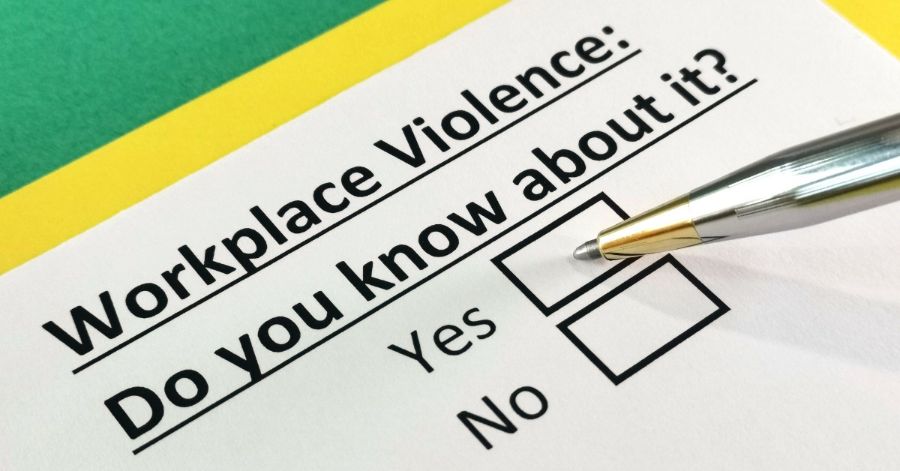Contributor: Dr. Steve Webb, Founder of Safe Secure Systems, Board-Certified Workplace Violence and Threat Assessment Specialist, and SAFE Training Program Instructor
Within the workplace, there are several facets that fall under the category of “safety,” and it is crucial that your worksite’s training address all potential hazards and dangers that employees may encounter on any given day. But have you taken into consideration the influence your worksite’s environment or culture has on the capacity for an act of workplace violence to occur? Does your workforce understand and “buy in” to the fact that they are an integral part of the process and, essentially, the key to reducing violence in the workplace? Below are the three major areas to consider when choosing a workplace violence training program.
Physical Safety
The physical security of an organization tends to cover a myriad of various aspects including building security protocols, electrical safety, transportation safety, and so much more. However, when it comes to ensuring the safety of individuals, the primary threat lies in the absence of proper situational awareness and the need to develop such awareness.
To minimize these threats, workers must be conscious of their surroundings. Educating workers on what to look for and when to do so can ultimately lead to an effectively trained workforce made up of threat assessment specialists that are capable of identifying hazardous situations and vulnerabilities. This now becomes an organization-wide movement rather than a top-down, ‘watch-another-video’, scenario that makes workers believe that safety is solely someone else’s job or responsibility.
Social Safety
Social safety centers around how your employees feel within their surroundings. Are they surrounded by other workers who are well-behaved and not considered a threat? Do they have the means to communicate with problem-solvers when or if a threat is suspected?
Effective training must address, and frequently re-address, how to deal with anger, fear, stress, and other negative emotions to help them avoid developing dangerous habits such as bullying, harassment, and ultimately violence. A healthy organization thrives on good communication, but so do socialites and their desire to be accepted. The two should not be separate worlds that are disconnected. If you truly want someone to “say something” if they “see something”, then your culture has to allow for safe communication tactics and effective training, as this is not a one-time video or sign-off sheet indicating compliance.
Mindset Safety
Research indicates that after experiencing some form of trauma or significant motivational event (such as watching news coverage of a mass shooting, attending an engaging keynote speech, or participating in a training program that strikes a personal chord), the mind’s interest in the subject is altered for a period of approximately 2 weeks or 14 days. During this time, individuals are more attuned to motivation and may identify and focus on previously overlooked aspects related to it.
But after those 2 weeks, humans start yearning for routine and comfort and unless your mind is stimulated again, human complacency begins to drive you away from the focus of interest back to daily routines and your comfort zone of direction. This is not necessarily a lack of focus, it is a lack of searching for peripheral knowledge that broadens your focus. I call this phenomenon of constant inquisition and basic questioning of sensory data the “Learner Mindset”. Good effective training not only trains your body, but it also trains your mind how to battle very dangerous complacency and to maintain focused situational awareness so that you identify ways to stop violence before it occurs, rather than just concentrating on “run, hide and fight” as most trainings do.
In general, taking your workplace violence training to another level is a big decision. Empowering your workforce and guiding them through a world of violence is a life-saving movement—not just on the job, but everywhere they go. So, now that you know what to look for in an effective training, and you compare it to yours, what is your answer to “ARE YOU READY?”
For more information about the SAFE Training Program or to have Dr. Webb speak at your event, call 1-877-453-SAFE or visit his website at drstevewebb.com.
About the Author
Dr. Steve Webb is a nationally acclaimed safety expert with a mission to prepare families, schools, and company employees to remain safe from violence. With over 27 years of experience in security, law enforcement, and education, he is the only emergency preparedness expert and trainer specially trained to neutralize a public shooter.
Dr. Webb’s vision is to create a world where people can live with the peace of mind that they are truly safe from social harm. To achieve this, he has developed his own SAFE system, which he teaches to children, small businesses, and corporations to help them prepare for unexpected violence.
As the top authority on safety from public violence, Dr. Webb has been interviewed on major news networks throughout the country. His expertise and practical solutions have helped countless individuals and organizations prepare for and respond to potential threats.

